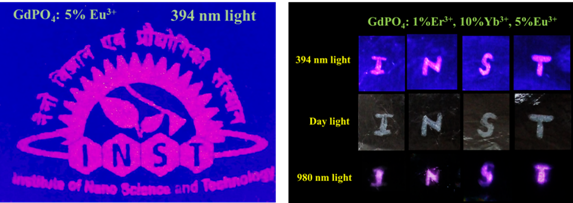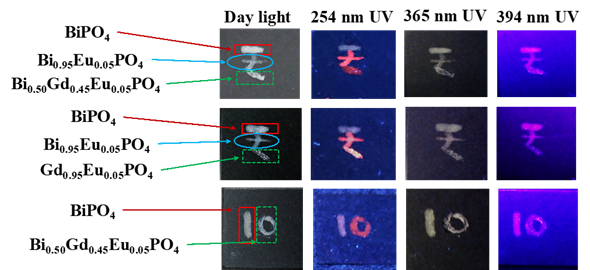Ministry of Science & Technology
Security ink based on nano-materials that spontaneously emits light can combat counterfeiting
प्रविष्टि तिथि:
26 OCT 2021 3:21PM by PIB Delhi
Indian Scientist has developed a highly stable and non-toxic security ink from nano-materials that spontaneously emit light (luminescent) due to its unique chemical properties to combat the counterfeiting of branded goods, bank-notes, medicine, certificates, currency.
Counterfeiting of branded goods, bank-notes, medicine, certificates, currency, and other important documents is very common all over the world, and it has become a serious issue. Luminescent ink is generally used as covert tags to combat the counterfeiting. Most of the security inks available today are based on luminescent materials that absorb a high energy photon and emit low energy photon, technically called downshifting, where covert tag is invisible under daylight, and it becomes visible under UV light. However, these single emission-based tags are prone to replication. To overcome this, luminescent ink with excitation-dependent luminescent properties (downshifting and upconversion) are advised. This is because increasing the number of parameters required to decode the tag decreases the possibility of decoding and replication. However, most of the materials reported recently for this purpose are based on fluorides which are less stable and highly toxic.
To address this challenge, Dr. Sanyasinaidu Boddu’s research group from the Institute of Nano Science and Technology, Mohali, an autonomous institute under the Department of Science & Technology, Government of India, has developed non-toxic metal phosphate-based ink with excitation dependant luminescent properties which are highly stable under practical conditions such as temperature, humidity and light, etc. This work has been published in the journals ‘Crystal Growth and Design’ and ‘Materials Today Communications’.
The luminescent security ink developed by the researcher is based on lanthanide ions (Ln3+) doped Gd1-xBixPO4 nano-materials. It showed very strong downshifting as well as upconversion luminescence properties. Also, the downshifting luminescence colour of the ink is highly dependent on the excitation wavelength making it difficult to decode the covert tag.
These luminescent nanomaterials were synthesized via simple co-precipitation method. A composite was made with these nanoparticles and commercially available PVC gold medium ink. The composite ink was used to print patterns and letters on black paper. The patterns of this ink under different excitation wavelengths were found to be stable against various conditions which may occur during practical applications.
Dr. Boddu explains that ‘Trivalent lanthanide ions have very rich energy levels which help to exhibit both downshifting (absorb a high energy photon and emit low energy photon) and upconversion (absorb two low energy photon and emit a high energy photon) luminescent properties. Energy transfer between bismuth and lanthanide ions results in excitation dependent downshifting emission.’
“Lanthanide ions are known for their excellent downshifting and upconversion luminescent properties. We thought that if these materials are applied for anti-counterfeiting, it will give better encoding, decoding capacity and thereby improve the security ability,” he added.
The developed ink has huge potential to combat counterfeiting. A common man can find out easily that the document/product is original or fake.

Figure 1. Digital photograph of (left) INST logo printed with security ink under 394 nm UV light, (right) I, N, S, T letters written with security ink on black paper under 394 nm light, daylight, and 980 nm NIR light.

Figure 2. Digital photographs of Indian rupee symbol ‘₹’ and ‘10’ written with security ink on black paper under daylight, 254, 365, and 394 nm UV light.
Publication links:
https://doi.org/10.1021/acs.cgd.1c00467
https://doi.org/10.1016/j.mtcomm.2021.102144
For more details, contact Dr. Sanyasinaidu Boddu (B.S. Naidu), Scientist-C (sanyasinaidu@inst.ac.in).
*****
SNC / RR
(रिलीज़ आईडी: 1766593)
आगंतुक पटल : 2053